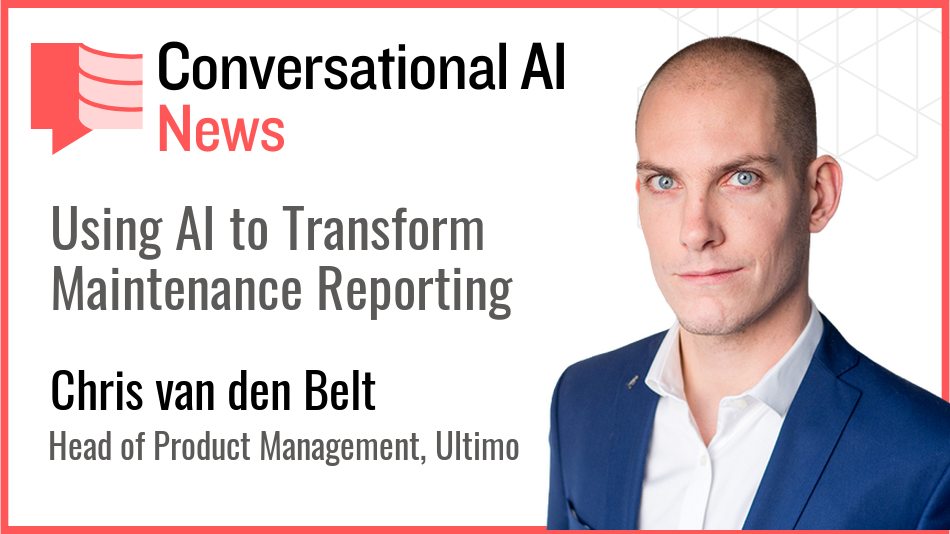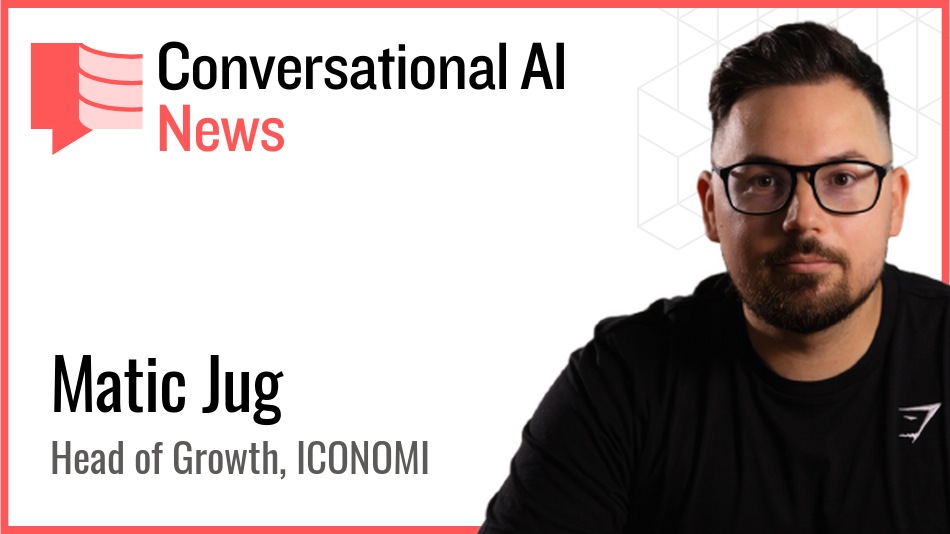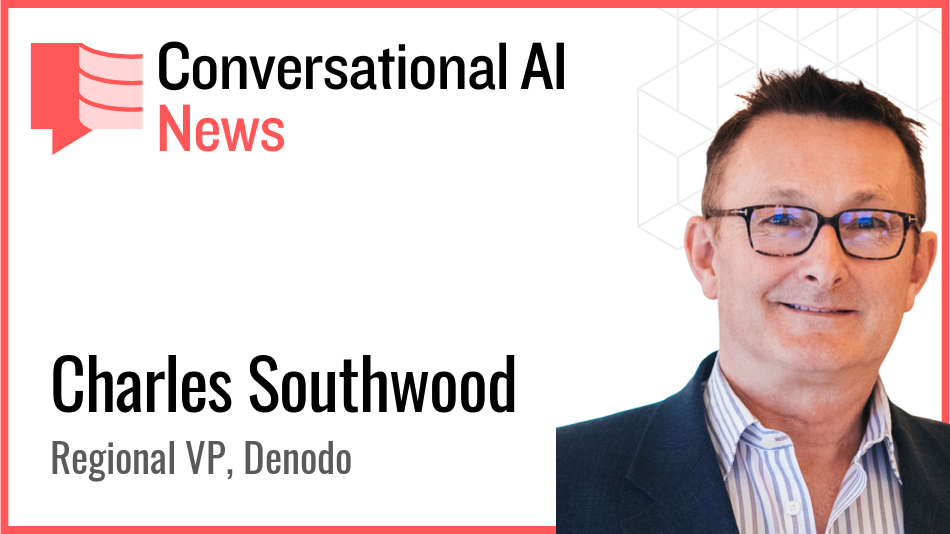Chris from Ultimo: Using AI to Transform Maintenance Reporting

Today we're meeting Chris van den Belt, Head of Product Management at Ultimo. They specialise in providing innovative software-as-a-service (SaaS) enterprise asset management (EAM) solutions for manufacturing, logistics and healthcare organizations.
Over to you Chris - my questions are in bold:
Who are you, and what's your background?
I live in the Netherlands with my wife and two children. After graduating with my Bachelor's degree in Communications, I started my career as a functional designer and later transitioned into a project management role at a software company focused on solutions for local governments. This experience laid a strong foundation in software development and stakeholder management. After three years, I made the move to Ultimo, where I have held various roles related to product management, allowing me to combine strategic thinking with hands-on involvement in product development.
I still enjoy working at Ultimo after 16 years. First of all because of the fantastic culture and growth opportunities, but what also sticks out is the connection and passion I feel for the subject matter, the customers, and the product itself. The challenges we help solve with our software are incredibly tangible, and it energises me to see the real-world value we deliver. Knowing that so many users interact with our software every day—and actually enjoy using it—drives my motivation and reinforces the importance of the work we do.
What is your job title, and what are your general responsibilities?
I'm Head of Product Management at Ultimo, an IFS company. We serve organizations in manufacturing, logistics and healthcare through our innovative software-as-a-service (SaaS) enterprise asset management (EAM) solution. Focused on maintenance, uptime, safety, cost control, and efficiency, we are known for rapid deployment, ease of use and an unparalleled time to value. Ultimo supports over 120,000 technicians who manage more than 15 million assets for 2400+ customers worldwide.
Besides leading Ultimo's Product Management team, I am responsible for defining and managing the product roadmap. My daily work revolves around understanding the challenges and needs of our customers and translating those insights—along with input from various stakeholders—into well-informed decisions. Together with my team, I carefully balance these perspectives to shape a successful product strategy and roadmap that aligns with both customer value and business goals.
Can you give us an overview of how you're using AI today?
Our vision for AI is to focus on real-world use cases. When considering what AI to integrate into our platform, we are only embedding features which will add significant value for our customers and improve their user experience.
Many AI technologies are geared towards predicting and preventing failures and incidents using real time sensor data. However, for most organizations, these technologies are more of a long-term goal than a short-term reality. Reactive maintenance will continue to feature prominently in most organization's maintenance strategies. With this in mind, Ultimo has made the conscious decision to harness the powers of AI to significantly reduce time spent on reactive maintenance. Realizing these short-term benefits starting today puts long-term objectives within arm's reach.
It is estimated that 80 per cent of the time in MTTR (mean time to repair, a metric to measure the average time it takes to diagnose and fix an asset failure) is spent on diagnosing a problem. The biggest chunk of time wasted is due to a lack of communication and detail in failure reports. With Ultimo's built-in AI capabilities, organizations can realize tremendous value with each percentage point reduction in MTTR. This is not chump change: the average cost of downtime in manufacturing often exceeds $100K per hour. Beyond the clear financial stakes, the productivity impact is also profound, especially in an industry where skilled labor is already hard to come by. Furthermore, the immense increase in overall data quality unlocks a wide array of new and exciting possibilities for achieving operational excellence.
Our first AI functionality provides better quality of failure reporting. Having to spend less time on diagnosing a problem means skilled employees will benefit from increased wrench time, increased asset availability, reduced admin time, improved collaboration and improved employee satisfaction.
Front line workers spend most of their working day close to the assets they know so well. Any changes to the way these assets look, sound, smell or feel will not pass them by. Using a large language model (LLM), Ultimo detects the asset in question and provides a series of tailored suggestions that the reporter can easily add to the failure report without having to type. In doing so, all the sensory observations are captured on the report accurately, providing maintenance teams with complete and accurate information to quickly solve the issue and increase asset availability and reliability.
This same approach will be used elsewhere in Ultimo to empower the faster resolution of diagnosed issues and enhance the accuracy of completed work activities registered in the system. The overall benefits include a substantial reduction of time spent on administration, severe improvements to data quality and a boost to employee satisfaction. Furthermore, Ultimo is working on integrated AI features that will greatly improve user experience, such as photo-based meter readings and auto-generated image and document captions, AI-support for writing work instructions, asset creation using photos (i.e. of a type of plate), etc.
Besides that, we are actively experimenting with agentic AI and vector search, two technologies that open a world of new possibilities. Together with our customers, we are exploring which tasks can be automated – ranging from repetitive or time-consuming work to those valuable activities that often fall by the wayside but are essential for continuous improvement. By delivering proactive suggestions on how to perform maintenance in a smarter, more efficient, cost-effective, and safer way, we're taking Enterprise Asset Management (EAM) to the next level.
Tell us about your investment in AI? What's your approach?
Our AI investment fully focuses on high impact use cases within the EAM domain. For adjacent areas like asset performance management – where AI solutions often rely on real-time monitoring and predictive analytics – we choose for technology partnerships, enabling integrations rather than building those capabilities in-house. Within our organization, a small group of specialists is dedicated to exploring emerging technologies and identifying valuable AI use cases. Once these ideas are mature enough, they're handed off to our regular SCRUM teams, who incorporate them into the core product alongside non-AI features. This approach ensures AI is integrated thoughtfully and pragmatically, aligning with our product strategy and delivering real value to our customers.
What prompted you to explore AI solutions? What specific problems were you trying to solve?
In today's industrial landscape, asset managers are being asked to do more than ever before. They must navigate a global labor shortage, comply with increasingly complex health, safety, and environmental regulations, and keep pace with accelerating technological change. Amid this complexity, one truth stands out: the predictable, manageable performance of physical assets can be a competitive advantage to a business.
Downtime isn't just inconvenient, it's expensive. That's why EAM has become a boardroom topic. AI functionality enables our customers to get ahead of the curve.
To help them, we have developed a tailored and unique EAM Maturity Model. It tracks where organizations are in their EAM journey across five levels of technical sophistication. Our proprietary model helps them to understand how to unite maintenance, operations, health & safety and finance.
As maintenance teams progress along their EAM journey, they're able to stop reacting to failures, and start proactively planning their maintenance. Integrating the right solutions related to environment, health and safety and operations, and making more data-driven decisions to maximize return on investment (ROI) and extending asset lifecycles. And the list goes on right through automation and AI integration to assure the healthy, predictable operations of physical industrial assets. Built-in AI capabilities to significantly reduce the time they spend on reactive maintenance. Using a large language model, Ultimo helps organizations speed up issue diagnosis, providing a series of tailored suggestions to technicians and automatically populating failure reports with complete and accurate information.
Alongside enabling teams to quickly resolve issues and reduce MTTR, this capability elevates the quality of data captured in work order histories. All of which supports faster fault resolution in the future and improves technician productivity.
Rather than trying to instantly jump to predictive maintenance, organizations that start using AI for work order documentation, knowledge retrieval and context-aware insights will be able to build the data foundations needed to support their longer-term transition toward predictive reliability.
Who are the primary users of your AI systems, and what's your measurement of success? Have you encountered any unexpected use cases or benefits?
For industrial firms the benefits are clear. AI will enable a new era of operational resilience in which organizations undertake proactive asset monitoring to predict and prevent equipment failures. In addition to increasing asset availability, AI will help optimize the responsiveness of maintenance teams and boost the productivity of frontline personnel.
AI will also enable organizations to attract next-generation talent and properly address the skills shortages that threaten to inhibit their operations. Workers will be empowered to do their jobs better and more efficiently. It will also enable a much broader segment of the workforce to engage in high-skill work tasks.
What has been your biggest learning or pivot moment in your AI journey?
One of the biggest learning moments in my AI journey was realizing how easy it is—even for myself—to stay too close to existing solutions when thinking about how to apply AI. Like many of our customers, I initially approached AI as a tool to make current processes slightly better or more efficient. However, the rapid pace of technological advancement, especially with the rise of Agentic AI, has shown me that the real potential lies in rethinking our approach entirely. These developments challenge us to break out of conventional thinking and explore entirely new ways of working, where AI is not just an assistant but an active contributor in process execution and decision-making.
At the same time, I've come to understand how important it is to balance innovation with the reality of our diverse user base. Some users are digital natives, fully comfortable with the latest technology, while others are still transitioning from paper-based workflows and may feel overwhelmed by rapid change. This has taught me that successful adoption is not only about what technology can do, but also how it's introduced and adapted to different levels of digital maturity. The key is to design AI-powered solutions that make change easier—supporting users at every step while still pushing the boundaries of what's possible.
How do you address ethical considerations and responsible AI use in your organisation?
In the field of EAM, we deal with critical processes where the impact of decisions can be far-reaching. That's why we fully embrace the principles of the EU AI Act and are currently focusing on low- or minimal-risk use cases. Transparency is also key to ensure proper adoption; we believe AI needs to earn its place in our users' workflows by proving its value in a clear and understandable way. Internally, we have established a comprehensive framework for our development teams, including a detailed list of potential risks, corresponding mitigation measures, and ethical guidelines that each AI use case must adhere to.
We are in ongoing dialogue with our customers about this balancing act—what is technically possible versus what we should do. These discussions help guide responsible innovation and sharpen our focus on ethical boundaries. We're also transparent with our customers about how their data is used, not only in AI-driven features within our product but also in our internal processes where AI might be involved. Responsible AI is not just about compliance; it's about building long-term trust by being clear, careful, and deliberate in how we apply these powerful technologies.
What skills or capabilities are you currently building in your team to prepare for the next phase of AI development?
We are preparing our team for the next phase of AI development by focusing on a combination of technical skills, mindset shifts, and architectural readiness. On the technical side, we are actively investing in learning and experimenting with new AI technologies, including large language models, vector databases, and agentic frameworks. At the same time, we are encouraging a different way of thinking—moving beyond incremental improvements to exploring how AI can fundamentally reshape processes and user interactions.
Equally important is how we design and build our software. We are rapidly learning what it takes to make our platform "AI-ready," ensuring the architecture, data flows, and user interfaces can support current and future AI use cases. As a result, AI readiness has become a standard item in the Definition of Done for our Scrum teams, making it an integral part of our development process rather than a separate track. This holistic approach ensures we're not just experimenting with AI but embedding it into the foundation of how we build value.
If you had a magic wand, what one thing would you change about current AI technology, regulation or adoption patterns?
I would drastically reduce the energy consumption and environmental footprint of current AI technologies—especially generative models. While the possibilities are exciting, I sincerely hope that innovation will lead to much more sustainable solutions soon.
What is your advice for other senior leaders evaluating their approach to using and implementing AI? What's one thing you wish you had known before starting your AI journey?
Despite the promises of predictive maintenance and data-driven decision-making, the real-world application of AI in asset management faces a unique challenge – that of data quality and availability.
Since AI models, especially large language models (LLMs), are only as effective as the data used to train them, high-quality and comprehensive data is a must have to assure reliable outcomes. However, asset-related data comes from a wide variety of sources: IoT sensors, maintenance logs, unstructured technician notes and siloed legacy systems.
To confidently power up advanced predictive analytics and generate decision-making insights for frontline teams, organizations will first need to aggregate, integrate and manage data from all these disparate sources to populate their AI platforms. Once this hurdle is overcome, they will then be able to start leveraging AI in their EAM operations.
Organizations will need a practical roadmap to speed up AI adoption and bridge the gap between its promise and real-world application. Fortunately, specialized EAM solutions like Ultimo are now introducing AI-powered features that help organizations unlock the true value of AI. Best of all, there is no need for these organizations to build or train their own AI models or make heavy investments in AI infrastructure.
What AI tools or platforms do you personally use beyond your professional use cases?
Beyond the widely adopted AI tools, I don't use many others in my personal life—if anything, I might even be slightly behind my wife and kids in that area! Outside of work, I try to minimize my screen time and prefer spending quality time with my family or getting my hands dirty renovating our house.
What's the most impressive new AI product or service you've seen recently?
Sesame.com! While generative AI voice conversations have been improving steadily, this one stuck out. The ability to fine-tune the character and tone to perfectly match the target audience makes it incredibly powerful—and I believe it has real potential to drive broad adoption in the professional field of our customers.
Finally, let's talk predictions. What trends do you think are going to define the next 12-18 months in the AI technology sector, particularly for your industry?
Over the next 12–18 months, I believe the AI landscape—especially within the EAM space in the manufacturing industry—will be defined by the rise of agentic AI, the accelerating pace of technological advancement, and the growing gap between what's technically possible and what's being widely adopted.
Agentic AI, capable of taking autonomous actions based on goals and context, has the potential to revolutionize maintenance planning and execution. However, the manufacturing sector is traditionally conservative and risk-averse, especially when it comes to critical processes. This may cause a divergence between innovation and implementation, where the technology moves faster than organizations are ready or willing to adapt. The challenge will be in bridging that gap with solutions that are not only powerful, but also trustworthy, transparent, and tailored to the realities of the end users.
Thank you very much, Chris!
Read more about Chris on LinkedIn and find out more about Ultimo at www.ultimo.com.




